An adaptation from the book “Darkfield Warriors”
By Greg Fredericks N.D. N.M.D. © 2020
For most people the concept of two totally different paradigms of biology and medicine existing simultaneously for over 150 years may come as a surprise. We have all heard of alternative medicine but perhaps not an alternative biology that has a completely different explanation on how disease develops. Such is the case today as the re-emergence of an alternative biology refuses to stay suppressed as it was intended by big pharma and invested interests.
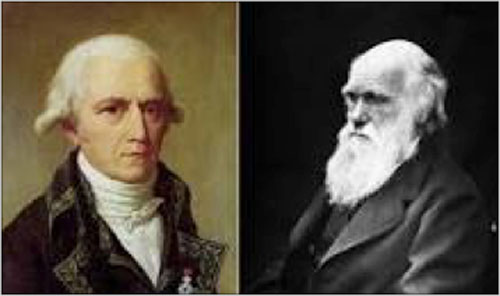
High school biology teachers to this day still promote Darwinism and the origin of species that evolved by tooth and claw via a survival of the fittest. Darwinism teaches evolution happens by mere chance whereby a spontaneous mutation that has greater adaptable characteristics is more likely to survive and pass on its genetics through selective breeding.
This is also the belief system of eugenics which developed from Darwinian doctrine that perseveres today (Flew et al. 1959).
The opposing paradigm of Lamarck is usually taught to be absurd and laughable. Lamarckian biology believes that an organism can adapt to its environment and develop characteristics that can be passed on in its offspring. While this theory was and still is dismissed by mainstream biologists more recent scientific findings support Lamarck’s postulates.
A study published in the Journal of Neuroscience in 2008 by Li-Huei Tsai of MIT, demonstrates how epigenetic traits with respect to memory and brain neuroplascity can be transmitted to the next generation via the DNA (Singer et al. 2009). Other corroborative studies including that from neuroscientist Lisa Monteggia of the University of Texas Southwest Medical Center in Dallas and from neuroscientist David Sweatt from the University of Alabama Birmingham have published similar findings demonstrating a neo-Lamarckian adaptation (Barry et al. 2013). The actual mechanism of the underlying pattern of inheritance is still mystifying to scientists.
Darwinism versus Lamarkianism and its similarities to Monomorphism versus Pleomorphism
The conflicting philosophies of Darwinism versus Lamarkianism are similar to a conflict that existed in microbiology and medicine that also emerged during the 19th century.
This was the war of concepts of Monomorphism versus Pleomorphism that was to have far reaching consequences on the future of medicine to this present day.
Simply described, Monomorphism believes microbes cannot change and adapt while pleomorphism believes they can. Today everyone knows bacteria can become resistant to antibiotics and that superbugs can emerge through an adaptive response by producing regulatory RNAs (Feldon et. al. 2018). This is accepted as a known consequence just as cancer can become chemo resistant and become difficult to treat through conventional methods resulting in a palliative condition before death (Gschmiessner et al. 2020). In most instances cancer is still believed to be a “foci” disorder rather than a systemic imbalance. Nevertheless orthodox pharmacology produces more and more drugs based on a faulty assumption.
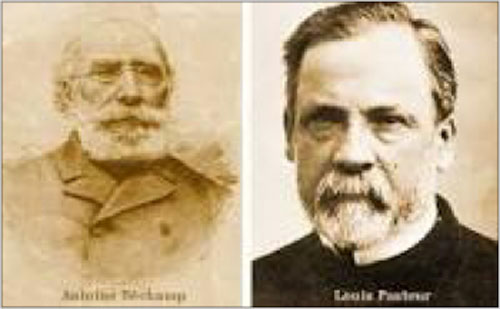
Even though science and medicine has gone through the three phases of truth from being ridiculed then violently opposes to becoming self evident, the concept of monomorphism has still been the economic driver of pharmacological medicine creating the mammoth super power it is today.
Since Antoine Bechamp’s monumental discovery of microzymas in the mid 19th century, he has been accredited as the original founder of pleomorphism which would later become an alternative biology or “New Biology”. Bechamp would go on to publish numerous articles and become one of the highest awarded biologists in history.
Bechamp also synthesized the first arsenic drug that would later become the first chemotherapy developed by Paul Ehrlich. Despite his major contributions and being plagiarized by Louis Pasteur as described in the book by Ethel Douglas Hume, he was subsequently omitted from any scientific and medical encyclopedic reference until the 1990’s.
His belief that the terrain of the blood was paramount in its effect on microbal forms a concept that originated from Claude Bernard, the scientist who originally developed laboratory pathology testing and the scientific explanation of homeostasis (self healing mechanisms).
The concept of terrain and the effect it has on the potential pathological development of microzymas was in direct opposition to Pasteur’s belief that microbal forms could not change (monomorphism) and that infectious agents originated from outside the body rather than created from within. This belief was an easy paradigm to accept by mainstream science at the time due to the numerous infectious diseases that plagued the 19th century.
Hume describes how the quietly spoken Bechamp was no match for the grandstanding Pasteur in any debate on the subject.
Pasteur’s earlier philosophies were based on the theory of spontaneous growth of bacteria, which is possibly more accurate than the notion he took from Virchow that blood is sterile. Pasteur adopted his concepts but called them “microbes” a term still firmly imprinted into biological syntax today.
Although Pasteur when a medical student was last in his class his strategic marketing techniques would go on to win the minds of scientists of the era and impact the future.
False Doctrine That Still Prevails
Who could have imagined that Ferdinand Cohn’s (1870) belief that each microbe having a single growth and reproductive form, could be taught at the forefront of biological doctrine still to this day and that William Harvey’s (1651) postulate that the cell is the smallest biological unit capable of cyclic reproduction could still prevail.
These misconceptions are the basis of most current medical dogma, further influenced by Pasteur’s doctrine that the blood of humans is sterile and pathology can only occur from an external microbe.
With every orifice of the body containing many varieties of bacteria, membranes being permeable, and the blood being a perfect culture medium, what leap of faith is required to believe that the blood isn’t a virtual playground of bacterial flora?
This is a total departure from Pasteur’s ‘germ theory’ in that an external invader is the potential source of disease. Pasteur classified them into different families, genera and species, so that each infection could be traced back to its own causative agent, another methodology still in use today.
Although in his last moments before his death he was reported saying “the terrain is everything the microbe is nothing” (meant as a vindication for Claude Bernard rather than Antoine Bechamp) the damage could not be reversed. Pasteur’s original monomorphistic explanation of disease became the template that would eventually drive 20th century pharmacology.
Tiny Particles and the Cancer Connection
While Bechamp’s microzymas attracted the attention of some biologists, similar discoveries and corroborative evidence was found by others in the medical field. The Scottish physician and pathologist William Russell described anomalies he viewed in tumors calling them “fushisine bodies”. These were tiny particles that stained to a bluish-red colour which Russell described as a yeast or fungal parasite which he named as “blastomycete”. The blastomycete is what he describes as “the characteristic organism of cancer”. Russell’s discoveries are remembered today by orthodox medicine as “Russell bodies” often seen by oncologists in cancer tumors and passed off as merely immunoglobulins.
As told by Gaston Naessens, in 1902 an obscure French scientist, Emile Doyden reported viewing tiny particles in the blood. He was known as the “noon lunatic” because he could only see the particles at noon in May, June and July at the time when the sun’s rays reached their zenith and contained the most ultraviolet light. To explain, ultraviolet wave lengths are shorter than incandescent therefore allowing one to see more.
However it was James Ewing’s textbook “Neoplastc Diseases” (1919) that became the dominant guideline for mainstream orthodox medicine in the early 20th century. It discredited the theory that a parasitic microbe could be involved in cancer and that pleomorphic processes were dismissed as incredulous.
Even with this predominant mindset established in medicine and microbiology there were those who saw the pleomorphic path as the only logical explanation for the pathogenic development of disease and cancer.
In a book by Dr. Alan Cantwell M.D. entitled “The Cancer Microbe” (1998) Cantwell states that after years of observing the cancer microbe “because the cancer microbe arises from life, it cannot be destroyed, it can only be transformed” (p.230).
He also discusses researchers who have found a pleomorphic microbe at the basis of the disease processes. He points out that these scientists went against the doctrine of the time. These scientists included pathologist John Nuzum from the University of Illinois, College of Medicine and surgeon Michael Scott from Butte, Montana as well as obstetrician James Young of Edinburgh, Scotland who produced research studies connecting pleomorphic bacterial cycles to cancer. They described the small barely visible forms (probably microzymas) and how they grew to larger cocci forms, then to rod forms and finally to fungal like spore forms. Nuzum learned that the microbe was small enough to pass through filters designed to hold back bacteria, (as did Raymond Royal Rife) indicating that some bacteria were the size of viruses.
Scott’s research led to a description of the three stages of the cancer microbe including the fungal stage. His work was an early 20th century effort to explain a cyclic Pleomorphism. He like other researchers who ventured into cancer research died a forgotten man after years of being ostracizes by mainstream medicine.
The other scientists including James Young published his “Description of an organism obtained from “Carcinomatous Growths” (1921) and another scientist T.J. Glover published the “Bacteriology of Cancer” (1930).
Young wrote extensive literature on the pleomorphic nature of microbes and there implications in cancer. With the help of his lab assistant Thomas Deaken they cultured organisms from the serum of over 3,000 cancer patients. Their isolate was a form they called “Cryptomyces Pleomorpha” (1935) (a hidden parasite capable of changing form), similar to Rife’s “Cryptocides Primordialis” (1933) (a hidden parasite existing since the beginning of time).
From their isolate, Young and Deaken developed a successful vaccine to induce cancer remissions. The principles of this vaccine have been copied and are still in use today. Dr George Clark of the Department of Public Health later confirmed the research results at the sixth Congress of Microbiology in Rome in 1953.
During the 1950’s some notable women researchers adopted the cancer microbe theory. Virginia Livingston-Wheeler, Eleanor Alexander-Jackson, Irene Diller, and Florence Seibert were those who continued the research.
Virginia Livingston-Wheeler named the microbe “Progenitor Cryptocides” (existing through millennia as a hidden killer), which irritated the American Cancer Society whose spokesperson denied the existence of such bacteria. It is interesting to note that Virginia Livingston-Wheeler made at least one visit to Rife’s laboratory in San Diego California where they both lived.
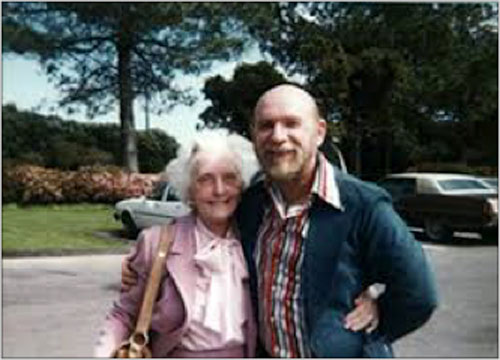
Dr. Eleanor Alexander-Jackson was one of the earliest researchers to demonstrate an “L” form in leprosy as well as in tuberculosis. Her work confirmed the virus-like characteristics of certain bacterial forms that were thought to be viruses.
It was Livingston-Wheeler however who developed a vaccine from her progenitor cryptocides taken from her patients. Another of her contributions was the discovery of pleomorphic organisms found in spermatozoa of cancer tissue which produce choriogonadatrophin (CG). This mammalian hormone creates a shield from attack by the body’s defence system similar to a defence mechanism protecting a foetus in pregnant women.
One of the constituents of choriogonadatrophin is sialic acid long known for its connection to degenerative illness and a metastatic promoter of cancer. According to Livingston-Wheeler this lipid apparently has a highly negative ionic charge capable of repelling lymphocytes and macrophages thereby protecting the cancer.
In the 1950’s Irene Diller joined forces with Virginia Livingston-Wheeler and Eleanor Alexander-Jackson after finding a fungal type spore in cancer cells. They performed many experiments on mice injecting them with the cancer causing bacterial forms. The results were so impressive to Florence Seibert whose work started in the 1920’s that she came out of retirement in the 1960’s to help prove the bacterial-cancer connection.
Seibert’s early work described how these bacteria would change form depending on changes in the terrain or medium in which they were allowed to grow. The before mentioned team of women researchers provided ample studies, some of which were published in the New York Academy of Sciences. However as funding was discontinued the work was forgotten. Florence Seibert was inducted into the National Women’s Hall Of Fame in 1990 at age 92.
The French-Canadian Connection
Canadian scientist, Gaston Naessens who passed away in 2018 was famous for his discovery of the “Somatidian life cycle” based on the particle in question. He found it not only in blood but also tissues in animals and humans. Throughout his life as a medical scientist Naessens was persecuted for his beliefs in a pleomorphic explanation for degenerative illness and his anticancer remedies. The development of his cancer vaccines became the focal point of litigation against him in numerous court battles in which he was always vindicated. Ironically the principles of the development of his vaccines have been copied by many biotech companies since.
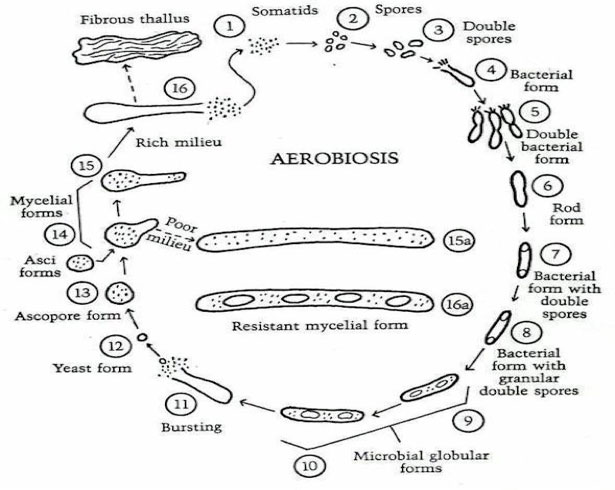
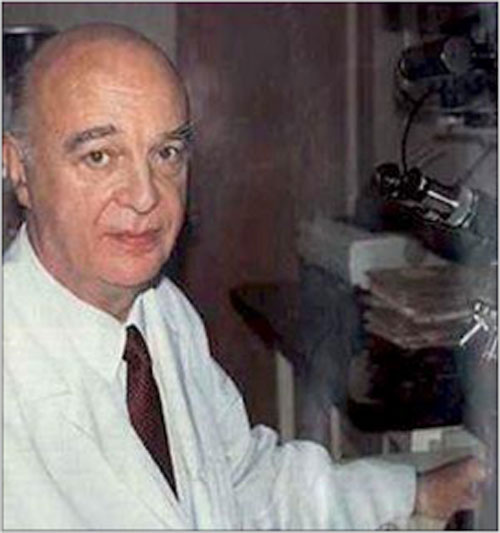
Gaston Naessens said that he was far from the first to discover the tiny particles that are capable of growing into bacterial forms and evolve into pathological forms if subjected to a disturbed terrain exposed to acidity and toxins. Numerous biologists have seen the tiny particles and have published articles relating to a pleomorphic mechanism of disease and cancer.
The following are a list of researchers who found a pleomorphic particle relating to cancer
Mulle J. (1838)
Vichow R. (1951)
Bechamp A. (1964)
Enderlein G. 1991)
Doyden E. (1902)
Schmidt O. (1903)
Citelli A. (1915)
Roy W. (1925)
Vincent R. (1926)
Glover T.J. (1926-1933)
Tissot J. (1926-1946)
Levine M. (1930)
Nebel A. (1932-1943)
Brehmer W. Von (1932-1950)
Morin C. (1932-1951)
Reich W. (1933)
Diller I. (1959-1972)
Gerlach E. (1937-1950)
Lentz E. (1936)
Neergaard Von (1938)
Villeguez M. (1940-1969)
Buzenac J. (1943)
Wuerthele-Gaspe V. (1948)
Stilson J. (1948)
Guilbert C.H. (1949)
Koch R. (1950)
Newman A.N. (1950)
Enderlein G. (1950)
Very J.E. (1951)
Devrient W. (1951)
Diller I. (1952)
Smith P. (1952)
Koresios I. (1952)
Fleisher M.S. (1953)
Issels J. (1953)
Clark G. A. (1953)
Livingston-Wheeler V. (1953)
Alexander-Jackson E. (1953)
Legrand P. (1954-1955)
Paquelet J.H. (1954-1955)
Mattei A. (1954-1955)
Vanderbosch J. (1959)
Hoekstra P. (1959)
Gravez H. (1960)
Revici E. (1961)
Bredo E. (1961)
Spyers M. (1962)
Mazet G. (1966)
Seibert F. (1972)
Backer J. (1972)
Davis R. (1972)
Yeomans F. (1972)
In nearly all work by the before mentioned scientists, they observed the tiny particles or a pleomorphic phase of the life cycle of its development. In nearly every case, orthodox biologists dismissed the microorganisms from cancer patients as either contamination or artefact. This was the case with Lentz’s “agaragenic bacteria” and Gerlach’s “micromycte” that was reported in their research studies. Of more notoriety was Von Brehmer’s discovery of “siphonospora polymorpha” and while confirming polymorphism (ability to change into other forms) he was able to conceptualize a complex life cycle as did Enderlein in his publication “Cyclogeny” in 1925”.
Von Brehmer also noticed how a shift in pH caused a change in the siphonospora organism. Von Brehmer nevertheless demonstrated a more simplistic model of a life cycle of pleomorphic organisms that had an impact on future research including that of the authors’ teacher Gaston Naessens.
A Particle of Light and Life
Naessens described the somatid as the basis of all life measuring between .01 and .001 microns in diameter and formed from a condensing of light particles. Naessens was not the only scientist to conceptualize how a colloid of light could become a colloid of life. Albert Einstein (1879-1955) and Alexander Gurwitsch (1974-1954) both described photons and biophotons respectively. Both Einstein and Gurwitsch considered the theoretical potential of them being the source of all life.
American Darkfield microscopist Dr Kurt Donsbach challenged this hypothesis by what he called “creating life in the form of protozoa”. He performed an experiment whereby he put grass in a container with sterile water. Using time lapse photography he captured the formation of vacuoles and pulsating movement (Brownian motion) and after four days the separation of a living mass classified as protozoa. Donsbach performed many experiments that were similar to Wilhelm Reich’s work of the 1930’s with the particle he called the “bion”. This same particle has been known under many different names as discussed in this article.
It is also interesting to note that Reich died in jail, a broken man after being persecuted for his beliefs, while Stanley Prusiner who was credited with the discovery of the “prion” was given the Nobel Prize in science and medicine. Donsbach was later prosecuted for tax evasion and practicing medicine without a license. His cancer clinic in Rosaria Beach Mexico still operates today.
The formation of life from colloids of light is somewhat reminiscent of Enderlein’s formation of colloid thecits secretions from thrombocytes (which some darkfield researchers called secretory vesicles and is known as an indicator of ‘Leaky Gut”). Enderlein believed these to be organizational generators of spermit, colloids and microsymprotits as early developmental polymorphisms of the life cycle of the endobiont (the particles in question).
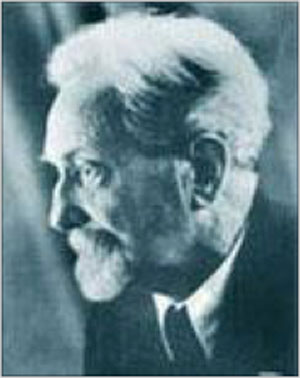
During the 1940’s and 1950’s Enderlein developed isopathic remedies that could retrograde the pathological endobiotic phases into less pathological phases. These were to become Sanum remedies which were design to restore pH, clear harmful lactic acids and restore balance of bacterial forms from morphing into harmful degenerative fungal forms (due to a disturbed terrain). Like Bechamp he was not included in any biological or medical reference until the 1990’s.
The Fungus among Us
The Endobiont as described by Enderlein is a description of two ubiquitous fungal forms known as Mucor racemoses fresen and Aspergillus niger van tiegham. When these two fungal forms become out of balance with the terrain degenerative diseases of different varieties can occur. According to Enderlein Mucor is related to many cardiovascular and degenerative cancers while Aspergillus when out of balance is implicated in breathing disorders, TB, asthma, arthritis, and metastatic cancer.
Enderlein’s paradigm explains that upon death the breakdown of cells occur by cellular implosion, releasing acids that activate the Aspergillus which is involved in rigor mortis.
A highly acidic terrain or mileu in a living person can potentially activate the Aspergillus (which is kept in a symbiotic balance with Mucor) and cause stiffness, congestion and arthritic conditions.
Gunther Enderlein was one of the earliest researchers to formulate a pleomorphic life cycle of the particles growing and evolving in the terrain of the blood from non pathological states to more advanced (high valence) pathological (disease related) states in the blood.
Gunther Enderlein stands out as the earliest microbiologist to publish articles (over 500 between 1981-1942) relating to the entomological topics concerning endobiosis and bacterial polymorphisms. His earliest article was entitled “Concerning the Pliocyclody of Bacteria. The Biological significance of Bacterial Gonitis, Gonidies and Cystitis”.
Most researchers including Enderlein, Naessens, Livingston-Wheeler and others agree that diet, stress, chemical-toxic exposure, and emotions all play a significant role in the effect on the terrain of the blood and potential histological (tissue) pathologies.
The Einstein of Medicine
The prominent orthodox physician Emanuel Revici MD from New York was a practitioner of darkfield microscopy at his Institute of Applied Biology in the 1960’s-1970’s. Known as the “Einstein of Medicine” Revici performed house calls for his patients into his nineties and developed controversial treatments for both cancer and addictions. His discoveries led to the hypothesis that all physical origins begin from a sub-atomic particle that progresses to chromosomes, nuclei, cells tissues and organs. He also noted that opposing forces, either anabolic or catabolic influenced the developmental stages and subsequent pathology or apathology.

Revici, the discoverer of leucotrienes, was one of the first physicians to prescribe selenium and omega 3’s decades before it became popular to do so. He developed products based on maintaining sterol and fatty acid balances of all cell membranes but these were only approved for use in Europe at that time.
21st century doctors such as Tulio Simoncini have reported similar advanced pleomorphic degenerative forms (fungus) involved in cancer. Simoncini has created a protocol of using bicarbonate of soda injections to dramatically alter the pH of tumors. This has met with fierce resistance from orthodox institutions and the cancelling of test studies and research supporting this protocol. This treatment has attracted ridicule from Memorial Sloan Kettering, the same institution that has never accepted the principles of pleomorphism being involved in the degenerative process of cancer.
Compelling evidence has shown that Sloan Kettering was found to have suppressed research proving the efficacy of laetrile in cancer during the 1960’s (Moss et al. 2014).
Compromised Ethics Anyone?
To date not much has changed, researchers that venture into cancer causing microbiology can expect repercussions if they do not conform to mainstream ideology.
Most funding for research still hinges on supporting outdated paradigms of Darwinism and monomorphic explanations of disease (Edwards et. al. 2017).
Pharmaceutical research today mainly focuses on the primacy of the DNA and development of DNA specific drugs.
The sub-atomic particles or photons that make up human DNA are now the subject of quantum entanglement physics, a potential for manipulative technology and mind control mechanisms (Ball et. al. 2017). After all, if one knew the frequencies to manipulate your individual DNA components would they not have total control over you?
Today laws in America allow scientists to patent their discoveries and engineer their vaccines while using tax payers’ money to fund their research.
One might ask, what are the chances of compromised ethics prevalent in science and medicine that could cause a “Plague of Corruption”? (Micovits et. al. 2020).
How can orthodox medicine ethically justify a billionaire with no medical credentials dictating the future of vaccines for humanity?
References:
Flew A.G.N. The Structure of Darwinism: New Biology, No. 28, 1959, pp. 27-28.
Singer E., A Comeback for Lamarckian Evolution? Two New Studies show that the effects of a mother’s early environment can be passed on to the next generation.MIT Technology Review Feb. 4, 2009.
Lamarckian Evolution explains Human Brain Evolution and Psychiatric disorders: Frontiers in Neuroscience. 26, November 2013. https://doi.org/10.3389/frins.2013.00224
Feldon B, Cattoir V. Bacterial Adaptation to Antibiotics through Regulatory RNAs: Antimicrobial Agents and Chemotherapy DOI: 10. 1128/ACC. 02 503-17 May 2018.
Gschmeissner et. al. How Cancer Cells Learn to Resist Chemotherapy: Nature nature.com/articles/ d41586-020-00722-0 13 March 2020.
Moss R., Doctored Results: The Suppression of Laetrile at Sloan Kettering Institute for Cancer Research. First Edition 242 pages (2014).
Edwards M.A., Roy S., Academic Research in the 21st Century: Maintaining Scientific Integrity in a Climate of Perverse Incentives and Hypercompetition: Environmental Engineering Sciences. Vol.34, No.1, Jan. 2017.
Ball, Phillip. The Strange Link between the Human Mind and Quantum Physics. Earth 16, Feb 2017. BBC.com/earth/story/20170215.
Micovits Dr. J., Heckenlively, K, Kennedy R. Jr., Hemmingway, M. Narrator, Plague of Corruption: Restoring Faith in the Promise of Science. Audible Audio book, unabridged: Oasis Audio (P) 2020.
Bibliography:
Bechamp A. The Blood and Its Third Element, Publisher: A Distant Mirror 2017 ISBN 978-1541159358
Bird, Christopher, 1991, The Persecution and Trial of Gaston Naessens, Tivuron, California.
Bischof, Marco, Biophotons, 1995, The Lights in Our Cells, Frankfurt, Germany, Ziveitausendeins.
Cantwell, AR Jr. 1990, The Cancer Microbe: The Hidden Killer in Cancer, Aids and Other Immune Diseases, Aries Rising Press, Los Angeles, USA.
Darwin C. The Origin of Species by means of natural Selection: 6th Edition, London, John Murray. 1872.
Enby, E. Hidden Killers, 1990, The Revolutionary Medical Discoveries of Professor Gunther Enderlein. Saratoga, California, U.S.A., Sheehan Communications.
Enderlein, Prof. Dr Gunther, 1999, Bacteria Cycolgeny, Prescott. A.Z., U.S.A.86034, Enderlein Enterprises Inc.
Gruner, O.C. 1935, Cryptomyces Pleomorpha: A Hew Organism Isolated from the Blood of a Case of Metastasised Carcinoma of the Breast, Canada Medical Assoc. Journal. 3: 15 19.
Hume Ethel, Douglas, 1989, Pasteur Exposed: The false foundation of modern medicine, Australia, Bookreal Publishers.
Livingston-Wheeler VWC, Wheeler OW, 1977, The Microbiology of Cancer, Livingston-Wheeler Medical Clinic Publication, San Diego.
Lynes, Barry, 1994, The Cancer Cure That Worked, P.O. Box 327, Queensville, Ontario Canada, Marcus Books.
Simoncini, Tullio, 2007, Cancer is a Fungus: A revolution in Tumour Therapy, Edizioni Lampas, Italy.
